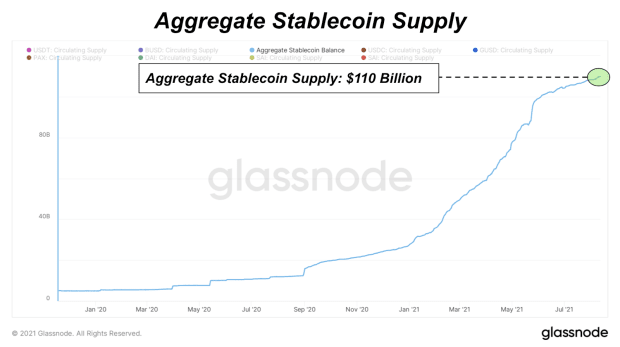Making Methane Reduction Profitable: The Story of DenverBitcoin
Find out how DenverBitcoin’s previous exposure to the oil and gas industry led him to see the potential for waste reduction while participating in the bitcoin mining industry.
This is an opinion editorial by Robert Warren, partner at Distributed Hash and business development at Upstream Data Inc.
This is the story of a father and son team that began their journey looking for cheap energy but found themselves sitting on one of the largest waste energy sources in the industry. The natural gas industry has found itself a perfect partner in bitcoin mining, and Adam Ortolf of Stranded Energy Investments has the mine to prove it.
In a truly entrepreneurial storyline, Adam Ortolf of Colorado (AKA @DenverBitcoin) went from managing a print shop on the Front Range to standing up a stranded natural gas bitcoin mine, and now helping grow Upstream Data Inc. into the industry provider it is today.
In 2017 Ortolf was managing a UPS store on the Colorado Front Range. One particular busy afternoon a patient customer noticed his work ethic and offered him a position at his oil and gas accounting company. Knowing nothing about oil and gas, Ortolf was skeptical of the offer, but after some consideration decided to join the small team that helped facilitate production accounting and management of oil wells.
It was there that Ortolf developed a feel for the oilfield from the hundreds of pages of production documentation he would comb through to produce reports for. His mentor, Rick, took the time to sit him down and whiteboard everything from planning to producing in the oilfield, “He taught me how to drill a well, everything from drilling to casing to perforation … I started to understand the economics of oil and gas. By this point I hadn’t even deeply understood bitcoin.”
“I learned oil and gas accounting and reporting just by doing it,” Ortolf says. “Gas can have a million different little variables. Maybe you’re flaring some of the gas, selling some of the gas, and maybe some of the gas is headed over here to a generator that powers a light and your internet. How do you account for that every month?” Poring over the numbers, Ortolf developed an intuition for well site operations. “I started to take notice when the numbers would be wrong,” he says.
It was in the numbers that Ortolf began to see how the patchwork of monitoring and legal requirements around natural gas under-reported the amount of gas being produced and often disposed of on sites.
“I learned what human beings actually do at the well site because I was reporting all of the important information … in the United States right now what’s reported, and this is an important distinction, what’s reported isn’t real. That’s what you pay taxes on and what you get paid for, but what isn’t being accounted for are gas lines popping, leaks, venting. If you are required to report on that you have to estimate, and if you’re going to get fined, you estimate low,” Ortolf said.
With that caveat in mind, it is often reported that approximately one billion cubic feet of natural gas is vented or flared daily, the majority coming from Texas. However, because Texas is more permissive of venting and flaring, these estimated numbers are considered artificially high compared to other oil producing states. When venting or flaring is heavily regulated or fined in a state, producers are incentivized to underreport what is happening on the well site.
Some rough estimates say that twice as much gas is vented or flared versus what is reported. This is enough energy to double the current bitcoin hash rate (approximately 200 exahash of wasted power at present difficulty).
The Opportunity In Waste Natural Gas
With eyes wide open to the vast amounts of natural gas wasted or lost every day, Ortolf found himself connecting two disparate universes — that of Bitcoin and oil and gas.
“There was an article about the mining death spiral. That term intrigued me then. Now understanding mining, it’s just FUD (Fear, uncertainty and doubt). It’s a market function. But being a naive person I thought Bitcoin was just another internet money scam.”
Understanding energy, Ortolf wanted to understand how this magic internet money scam actually worked. He thought, “I bet you the guys that are pulling the strings are the miners. I bet you I can figure out how they’re doing it. So I went to go learn about mining to figure out how these guys were scamming everybody.”
After researching the Bitcoin protocol and how mining worked in the system, Ortolf came to an unexpected conclusion, “Holy sh*t, you can’t rig this game, nobody can cheat this game — you can’t cheat a kWh.”
It was there that the connection between the often stranded, wasted or unaccounted for energy he worked with every day merged with bitcoin mining, “I understood energy, I understood oil and gas. I understood at this point that natural gas powers a significant percentage of the world, and that much of it is wasted … the way to produce this [bitcoin] is to generate electricity, and that’s a really low barrier.”
If miners on the Bitcoin network used this immense amount of lost natural gas, you would have a cost effective and environmentally positive way of funding the operation.
Ortolf explained, “We can sequester and mitigate it [waste gas] in an economical way, in a way that is actually profitable and reduces air emissions. All of a sudden you don’t need foundations to donate to save the planet, this is a self sustaining way to mitigate waste.”
He researched to see who else had made this connection. With little progress after weeks of hunting, he set up a Google alert for “flare gas mining” and combed through the results. One day the recommended reply from Google sent back the name “Upstream Data.”
Ortolf navigated to the website, “Finally, I was reading things that I had only been thinking… As much as today it’s a no brainer, at the time it didn’t feel anything like that. At the time I felt like a bit of a kook, like maybe I’m dreaming here.”
The Upstream Data Connection
Ortolf immediately scheduled a call with his business partner (his father) and Upstream Data. After a few hours on that first phone call with CEO Steve Barbour discussing the oilfield and bitcoin mining, Stranded Energy Investments decided to invest in an off grid bitcoin mining operation through Upstream Data, what is now called a Hash Combo.
What Ortolf said he loved about Upstream Data was the customer oriented nature of the business. Instead of the many get-rich-quick companies that have emerged and disappeared in this space through the years, “This guy was trying to build a 50 year gas company,” Ortolf says, “This company is going to be one of the best oil and gas companies of the century, he [Steve] has the vision and leadership skills to pull it off.”
The Upstream build consisted of a 50kW generator powering old generation Antminer S9s. Ortolf and his father initially invested in the building, generator and ASICs, and utilized Upstream Data’s engine maintenance services to keep the facility running on a Canadian well. In total they were generating approximately 400 terahash on an engine that consumed ~15 MCF of natural gas per day. This netted out to approximately $40/day at a $0.10 hash price.
But even with operations running on cheap gas, they were hit by a stagnation of hash price and an increase in mining difficulty. It was the rainy season in China, and miners were feasting on the glut of hydro power produced. Ortolf explained how he and his father asked themselves, saying, “How is it possible that we have the cheapest power in the world and we’re getting squeezed? And then, boom — rainy season ends in China, a ton of hash rate turns off, then bitcoin starts trickling back up … it happened fast, bitcoin was at forty-five thousand bucks and it was like we were buying it for eleven.”
From those experiences Ortolf continued his advocacy, consulting with oil and gas companies and energy producers to discuss the utilization of stranded or wasted energy for productive ends. Because of his experiences with Upstream Data Inc. he continued to send customers to them for their builds, “It was the only place I knew to send people,” Ortolf adds.


In a final turn of fate, just as his oil and gas mentor, Rick, noticed Ortolf’s efforts at the print shop, Steve Barbour could see the passion Ortolf brought to his consultation. Steve called Ortolf and offered him a position on the Upstream Data team in business development. So today when you reach out to Upstream Data to set up your first operation, you may have the opportunity to chat with Ortolf about his experiences setting up that first mine in the oilfield.

This is a guest post by Rob Warren. Opinions expressed are entirely their own and do not necessarily reflect those of BTC Inc or Bitcoin Magazine.









